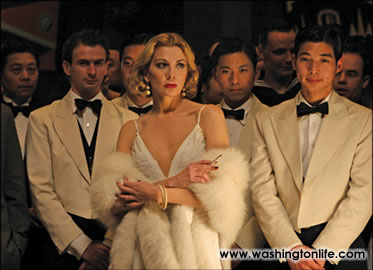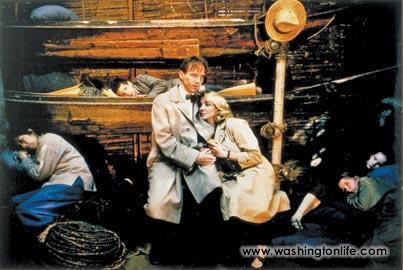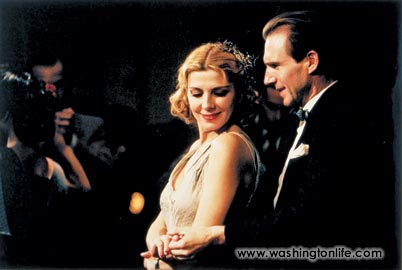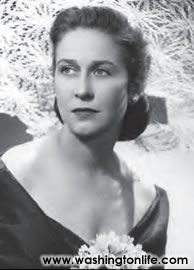POLLYWOOD | White CountessLast MERCHANT and IVORY film recalls SHANGHAI'S pre-war HEYDAY
Sadly, The White Countess marks an end of an era in more ways than one. In late 2005, Merchant and Ivory co-founder and producer for more than 44 years Ismail Merchant died in London while working on Countess. It's fitting then that his last collaboration with David Ivory has all the hallmarks of their greatest: attention to detail, complex characters, and a love for the unspoken. It also records the end of an era in swinging pre-war Shanghai. The film follows the story of blind former American diplomat Todd Jackson (Ralph Fiennes) and Sophia (Natasha Richardson), a former Russian countess, working at a dance hall. Together, with mysterious friend Matsuda (Hiroyuki Sanada), they realize Jackson's ultimate dream of opening a glamorous nightclub amid the political turmoil of 1930's Shanghai. Aside from the natural chemistry between Fiennes and Richardson, the project unites Richards with her mother Vanessa and aunt Lynn Redgrave (Aunt Sara and Olga) together for the first time on film. The screenplay is by Remains of the Day scribe Kazuo Ishiguro. After the premiere, WL sat down with director David Ivory and star Natasha Richardson to get their take on the film and hear about Natasha's next project: a turn as Mary Todd Lincoln.
Washington Life: Are you planning to visit the
President while in town? WL: Did you call his publicist? WL: Is this a political film?
WL: It's a love story? WL: There're some of them left in the world?
WL: Merchant and Ivory films are known for a
lot of unspoken dialogue.
NR: A lot is unsaid. WL: How did you prepare for that? WL: Your Russian accent was excellent.
WL: David, how are you finding Washington? WL: Natasha, you are coming back in February. WL: You're playing Mary Todd Lincoln?
WL: With a Russian accent?
Capitol Countess The Graceful GARNETT STACKELBERG BY DONNA SHOR They say that art imitates life. In the case of Garnett Stackelberg and “The White Countess,” you could say that art and life...are similar. Garnett, who passed away this time last year at 95, was, in the eyes of all who met her, a beautiful soul. She also, like the character played by Natasha Richardson, settled in bustling Shanghai in the 1930's, only to become caught up in the Japanese invasion. I'm proud to shed light on this lesser known aspect of Garnett's life. Shanghai in the 1930's, with its influx of Russian emigrés, was familiar to Washington's late beloved journalist, Garnett Stackelberg (1910-2005), who lived there ten years when Shanghai, “the Paris of the East,” was a dazzling party scene for the international community. Twenty-three year old Garnett left her Portland, Oregon home to sail to Shanghai with a college girlfriend, found a job with the U.S. embassy, and joined the whirl, dancing the night away at the Cathay Hotel. The radiant beauty, who was offered six marriage proposals in six weeks, married a Canadian, Dr. William Gardiner, and lived in high style with six servants, a houseboat, and a 14-room penthouse “filled with ivory, jade and pearls” as frequent guest Mrs. Cornelius Vanderbilt, Jr. (later Mrs. Jack Frye) described it. But in 1937, she watched Japanese troops march into Shanghai and lost 40 pounds during seven months of house arrest before she was released. She arrived in Washington after a two-month odyssey on the old liner, the Gripsholm. She later married Estonian Baron Constantine Stackelberg, who was a cousin of Lord Mount-batten's and related to the royal houses of England, Spain and Sweden (Spain's Queen Victoria Eugenia was godmother to their son “Sandy”). Throughout her marriage and journalistic career she traveled to 72 countries and although she interviewed and socialized with kings, queens and heads of state, she often wrote and spoke nostalgically of the Shanghai she knew. As a Shanghai friend, Washingtonian Marlys Chatel (see the adjoining column) recently reminisced: “The whole world came there, with visitors from the international smart set including Noel Coward and Charles Chaplin. We gathered at Ciro's club, at the French Cercle Sportif, and of course at Sir Victor Sassoon's Cathay Hotel. Shanghai then was a special place, never to be seen again.”
|
||||||||||||||||||||






